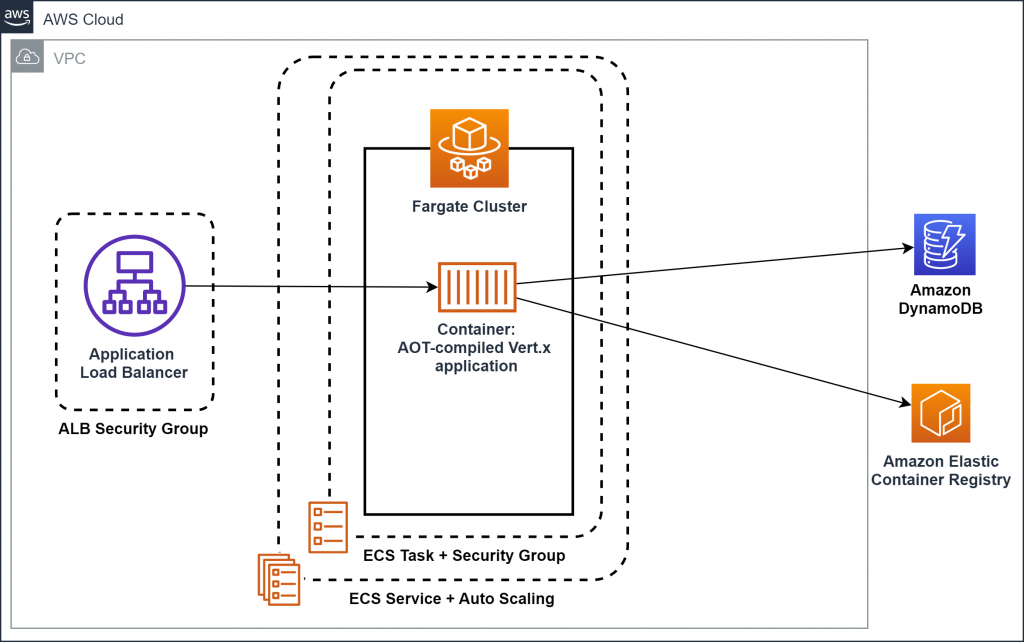AWS Fargate
 Nicanor Talks Web
Nicanor Talks Web
In the modern cloud landscape, the shift towards containerized applications has brought forth new application deployment and management paradigms. AWS Fargate, a key player in this evolution, offers a serverless approach to running containers, allowing developers to focus on building applications without the hassle of managing infrastructure.
What is AWS Fargate?
AWS Fargate is a compute engine for Amazon ECS (Elastic Container Service) and Amazon EKS (Elastic Kubernetes Service), enabling you to run containers without managing the underlying server infrastructure. With Fargate, you define and deploy containerized applications without worrying about server or cluster management, providing a truly serverless container experience.
Core Components of AWS Fargate
Task Definitions
A task definition is a blueprint for your application. It defines the containers to run, including their images, resource requirements, networking settings, and environment variables.
Components in task definitions:
Container Image: Specifies the Docker image to use.
CPU and Memory: Defines the resource limits for the container.
Environment Variables: Configures runtime variables.
Storage: Specify any required storage options.
Tasks
A task is an instance of a task definition running in Fargate. Tasks can be run on-demand or managed as part of a service.
Types of Tasks:
On-Demand: Run a task manually for ad-hoc workloads.
Scheduled: Run tasks at specified intervals using Amazon CloudWatch Events.
Services
A service manages the deployment and scaling of tasks. It ensures that the specified number of tasks are running and healthy.
Features offered by services:
Load Balancing to distribute incoming traffic across tasks.
Auto-Scaling: Adjusts the number of running tasks based on demand.
Rolling Updates: Deploy updates to your application without downtime.
Clusters
A cluster is a logical grouping of tasks or services. Both ECS and EKS use clusters to manage resources.
Organize and manage resources within your application environment.
Networking
VPC and Subnets: Fargate tasks run within a Virtual Private Cloud (VPC). To control access and connectivity, you can configure networking using security groups and subnets.
Service Discovery: Integrated with AWS Cloud Map for service discovery, enabling your tasks to find and communicate with each other.
Security
IAM Roles: Assign IAM roles to tasks to manage permissions for accessing other AWS services.
Task Role: Grants permissions to the container for accessing AWS services.
Execution Role: Allows Fargate to pull container images and write logs to CloudWatch.
Storage
Ephemeral Storage: Temporary storage that is lost when the task stops.
EFS: Amazon Elastic File System provides persistent storage that can be mounted to tasks.
Benefits of AWS Fargate
No Infrastructure Management: Fargate abstracts the underlying infrastructure, allowing you to focus solely on your application.
Automatic Scaling: Automatically scales the number of tasks based on the load, ensuring efficient resource usage.
Cost Efficiency: Pay only for the compute and storage resources used by your tasks, eliminating over-provisioning.
Seamless Integration: Works with AWS services like ALB (Application Load Balancer), CloudWatch, and IAM, providing a cohesive ecosystem for managing applications.
Enhanced Security: Isolates tasks and uses IAM roles for secure access to resources.
Getting Started with AWS Fargate
Define a Task
- Create a task definition specifying the container image, CPU and memory requirements, and other configurations. This can be done through the AWS Management Console or using the AWS CLI.
Create a Service
- Set up a service to manage the deployment and scaling of your tasks. Configure load balancing, auto-scaling, and deployment preferences.
Run Tasks
- Launch tasks manually or let your service handle the deployment. Use the ECS console or CLI to manage task execution.
Monitor and Manage
- Utilize Amazon CloudWatch to monitor task performance and set up alarms for critical metrics. Manage logs and troubleshoot issues using CloudWatch Logs.
Update and Scale
- Adjust task definitions and services as needed to update your application or scale based on traffic. Use rolling updates for zero-downtime deployments.
Advanced Features and Best Practices
Custom Networking
- Configure VPC settings to control network access and communication between tasks. Use private subnets for internal communication and public subnets for external access.
Task Placement Strategies
- Control how tasks are distributed across your cluster using placement strategies. This helps optimize resource utilization and manage task placement based on criteria like availability zones and instance types.
Task Auto-Scaling
- Set up auto-scaling policies to automatically adjust the number of running tasks based on metrics such as CPU utilization or request count. This ensures your application can handle varying loads efficiently.
Cost Management
- Monitor and optimize costs by analyzing resource usage and adjusting task definitions and service configurations. Use AWS Cost Explorer and AWS Budgets to track and manage expenses.
AWS Fargate represents a significant advancement in container management, offering a serverless approach that simplifies deployment and scaling. By abstracting the infrastructure layer, Fargate enables developers to focus on their applications, ensuring efficient resource utilization and seamless integration with other AWS services. Whether you’re running microservices, batch jobs, or complex applications, AWS Fargate provides a powerful and flexible solution for modern containerized environments.
Subscribe to my newsletter
Read articles from Nicanor Talks Web directly inside your inbox. Subscribe to the newsletter, and don't miss out.
Written by

Nicanor Talks Web
Nicanor Talks Web
Hi there! I'm Nicanor, and I'm a Software Engineer. I'm passionate about solving humanitarian problems through tech, and I love sharing my knowledge and insights with others.